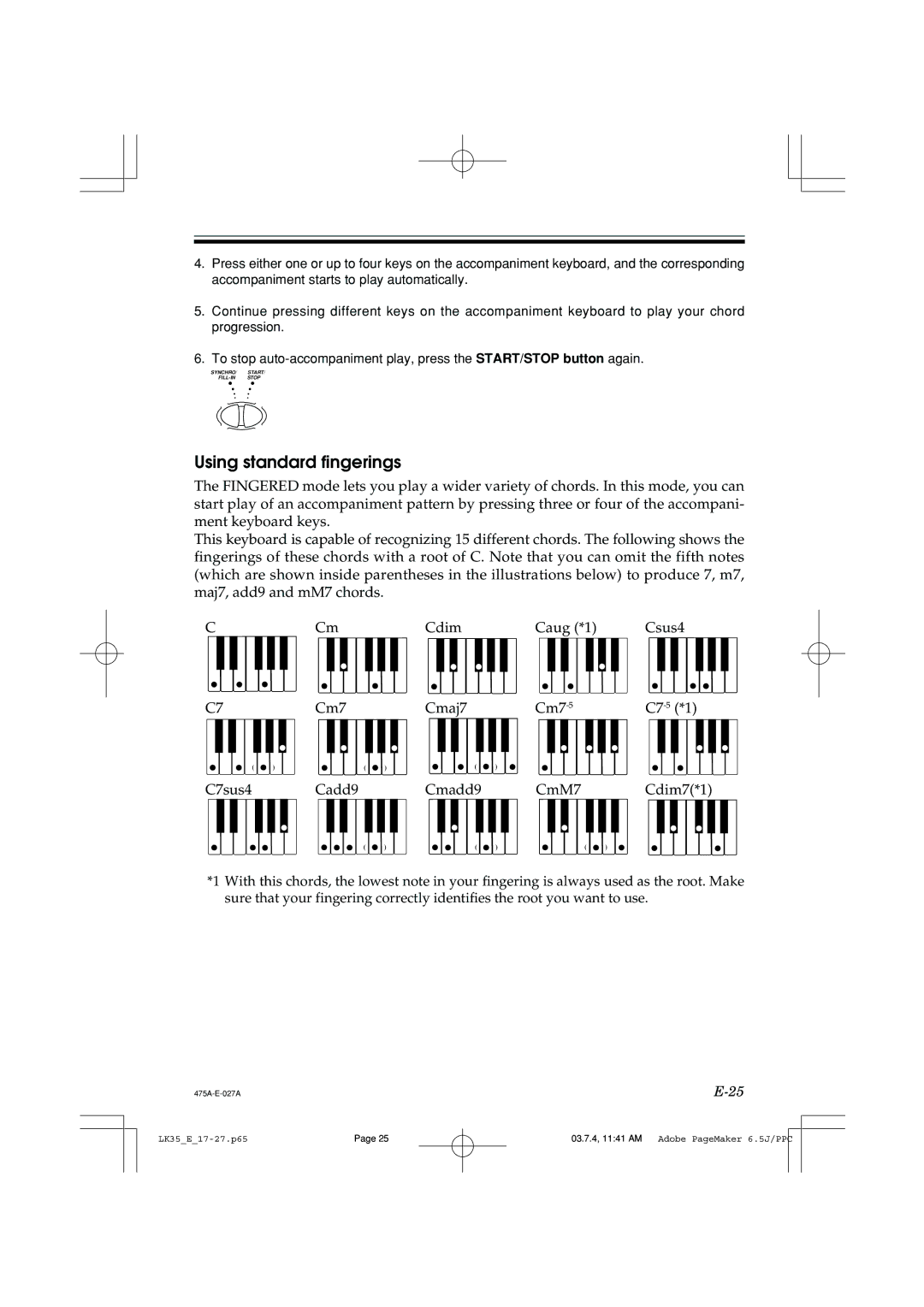
4.Press either one or up to four keys on the accompaniment keyboard, and the corresponding accompaniment starts to play automatically.
5.Continue pressing different keys on the accompaniment keyboard to play your chord progression.
6.To stop
SYNCHRO/ START/
Using standard fingerings
The FINGERED mode lets you play a wider variety of chords. In this mode, you can start play of an accompaniment pattern by pressing three or four of the accompani- ment keyboard keys.
This keyboard is capable of recognizing 15 different chords. The following shows the fingerings of these chords with a root of C. Note that you can omit the fifth notes (which are shown inside parentheses in the illustrations below) to produce 7, m7, maj7, add9 and mM7 chords.
C |
|
|
|
|
|
|
|
|
| Cm |
|
|
|
|
|
|
| Cdim |
|
|
|
|
| Caug (*1) |
|
|
| Csus4 | ||||||||||||||||
|
|
|
|
|
|
|
|
|
|
|
|
|
|
|
|
|
|
|
|
|
|
|
|
|
|
|
|
|
|
|
|
|
|
|
|
|
|
|
|
|
|
|
|
|
C7 | Cm7 |
| Cmaj7 | ||
( ) | ( | ) | ( | ) |
|
C7sus4 | Cadd9 |
| Cmadd9 | CmM7 | Cdim7(*1) |
| ( | ) | ( | ) | ( ) |
*1 With this chords, the lowest note in your fingering is always used as the root. Make sure that your fingering correctly identifies the root you want to use.
Page 25 | 03.7.4, 11:41 AM Adobe PageMaker 6.5J/PPC |
|
| |
|
| |||
|
|
|
|
|
